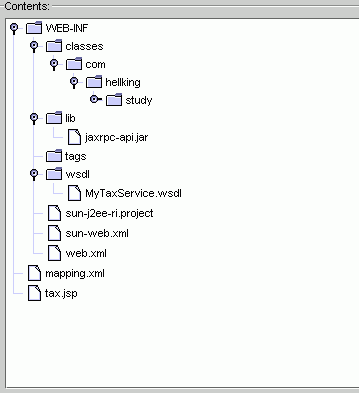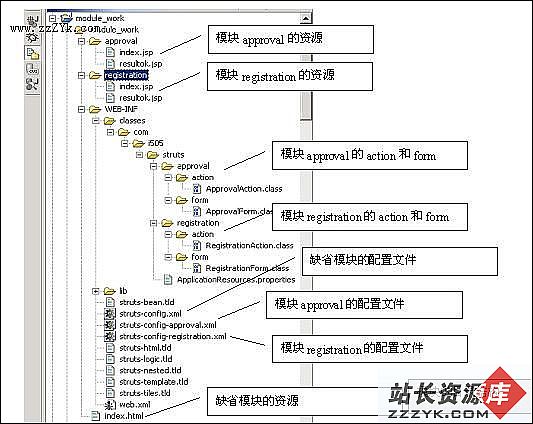答案:序言
许多用户可能会遇到这样的情况:在网站上发现一个很好的资源,但是这个资源是分成了很多个文件存放的,如果想把它保存到本地,只有靠用户点击另存来完成保存,如果资源分了几百甚至上千上万,那简直是个灾难。
在Internet上很多的资源分成多个文件存放时,它的文件命名是有一定的规则的;正因如此,我们就可以用程序来完成这个资源的完全下载。1. 基础知识
在Internet上,我们要下载网站上的某个资源,我们会获得一个URL(Uniform Resource Locator),它是一个服务器资源定位的描述,下载的过程总是如下步骤:
- 步骤1:客户端发起连接请求一个URL
- 步骤2:服务器解析URL,并将指定的资源返回一个输入流给客户
- 步骤3:客户端接收输入流,将流中的内容存到文件
Java提供了对URL访问和大量的流操作的的API,我们可以很容易的完成对网络上资源的存取,下面的代码段就完成了对一个网站的资源进行访问:
| ...... destUrl="http://www.ebook.com/java/网络编程001.zip"; url = new URL(destUrl); httpUrl = (HttpURLConnection) url.openConnection(); //连接指定的网络资源 httpUrl.connect(); //获取网络输入流 bis = new BufferedInputStream(httpUrl.getInputStream()); ...... |
3. 代理的访问
Java 中通过代理服务器访问外网的方法已经是世人皆知的秘密了。这里就不再多描述了,访问的Java代码如下:
| //设置代理服务器 System.getProperties().put("proxySet", "true"); System.getProperties().put("proxyHost", "10.154.134.110"); System.getProperties().put("proxyPort", "8080"); |
4. 网络资源的保存
在上节中,我们已经获取了指定网络资源的输入流,接下来我们要完成的就是读取输入流中的所以内容,并将其保存在文件中。 示例代码:
| ...... fos = new FileOutputStream(fileName); if (this.DEBUG) System.out.println("正在获取链接[" + destUrl + "]的内容...\n将其保存为文件[" + fileName +"]"); //保存文件 while ( (size = bis.read(buf)) != -1) fos.write(buf, 0, size); ...... |
上面的示例代码就将网络资源的内容保存到了本地指定的文件中。
5. 代码清单 import java.io.*;import java.net.*;import java.util.*;/** * <p>Title: 个人开发的API</p> * <p>Description: 将指定的HTTP网络资源在本地以文件形式存放</p> * <p>Copyright: Copyright (c) 2004</p> * <p>Company: NewSky</p> * @author MagicLiao * @version 1.0 */public class HttpGet { public final static boolean DEBUG = true;//调试用 private static int BUFFER_SIZE = 8096;//缓冲区大小 private Vector vDownLoad = new Vector();//URL列表 private Vector vFileList = new Vector();//下载后的保存文件名列表 /** * 构造方法 */ public HttpGet() { } /** * 清除下载列表 */ public void resetList() { vDownLoad.clear(); vFileList.clear(); } /** * 增加下载列表项 * * @param url String * @param filename String */ public void addItem(String url, String filename) { vDownLoad.add(url); vFileList.add(filename); } /** * 根据列表下载资源 */ public void downLoadByList() { String url = null; String filename = null; //按列表顺序保存资源 for (int i = 0; i < vDownLoad.size(); i++) { url = (String) vDownLoad.get(i); filename = (String) vFileList.get(i); try { saveToFile(url, filename); } catch (IOException err) { if (DEBUG) { System.out.println("资源[" + url + "]下载失败!!!"); } } } if (DEBUG) { System.out.println("下载完成!!!"); } } /** * 将HTTP资源另存为文件 * * @param destUrl String * @param fileName String * @throws Exception */ public void saveToFile(String destUrl, String fileName) throws IOException { FileOutputStream fos = null; BufferedInputStream bis = null; HttpURLConnection httpUrl = null; URL url = null; byte[] buf = new byte[BUFFER_SIZE]; int size = 0; //建立链接 url = new URL(destUrl); httpUrl = (HttpURLConnection) url.openConnection(); //连接指定的资源 httpUrl.connect(); //获取网络输入流 bis = new BufferedInputStream(httpUrl.getInputStream()); //建立文件 fos = new FileOutputStream(fileName); if (this.DEBUG) System.out.println("正在获取链接[" + destUrl + "]的内容...\n将其保存为文件[" + fileName + "]"); //保存文件 while ( (size = bis.read(buf)) != -1) fos.write(buf, 0, size); fos.close(); bis.close(); httpUrl.disconnect(); } /** * 设置代理服务器 * * @param proxy String * @param proxyPort String */ public void setProxyServer(String proxy, String proxyPort) { //设置代理服务器 System.getProperties().put("proxySet", "true"); System.getProperties().put("proxyHost", proxy); System.getProperties().put("proxyPort", proxyPort); } /** * 设置认证用户名与密码 * * @param uid String * @param pwd String */ public void setAuthenticator(String uid, String pwd) { Authenticator.setDefault(new MyAuthenticator(uid, pwd)); } /** * 主方法(用于测试) * * @param argv String[] */ public static void main(String argv[]) { HttpGet oInstance = new HttpGet();try {//增加下载列表(此处用户可以写入自己代码来增加下载列表)oInstance.addItem("http://www.ebook.com/java/网络编程001.zip","./网络编程1.zip");oInstance.addItem("http://www.ebook.com/java/网络编程002.zip","./网络编程2.zip");oInstance.addItem("http://www.ebook.com/java/网络编程003.zip","./网络编程3.zip");oInstance.addItem("http://www.ebook.com/java/网络编程004.zip","./网络编程4.zip");oInstance.addItem("http://www.ebook.com/java/网络编程005.zip","./网络编程5.zip");oInstance.addItem("http://www.ebook.com/java/网络编程006.zip","./网络编程6.zip");oInstance.addItem("http://www.ebook.com/java/网络编程007.zip","./网络编程7.zip");//开始下载oInstance.downLoadByList(); } catch (Exception err) { System.out.println(err.getMessage()); } }}
下载源代码
- 更多JSP疑问解答:
- jsp新手求指导,不要笑!
- 如何让一个form提取的值传递给多个jsp?
- DW中,新建的html页面能否有jsp或php代码?
- jsp 如何限制表单,实现只能填写特定的数据。
- jsp 和javabean结合的程序有问题
- 从数据库里取出的数据如何传递到另外的jsp页面中
- 你好,ext嵌入那个jsp页面,是不是还需要加上一些插件啊,不太懂,麻烦你了。
- JSP不能处理所有问题吗?还要来一大堆的TLD,TAG,XML。为JSP 非要 Servlet 不可吗?
- 光标离开时全角转半角在jsp中怎么实现
- jsp 页面 打开 pdf 文件 控制大小 和 工具栏 能发份源码么 谢啦
- jsp页面点保存按钮,运行缓慢,弹出对话框提示
- jsp刷新页面如何不闪屏
- jsp 与html 的交互问题?
- jsp小数显示问题 例如 我在oracle 数据库中查询出来的是 0.01 但是在jsp页面上就显示成 .01 没有前面的0
- jsp中日历控件





